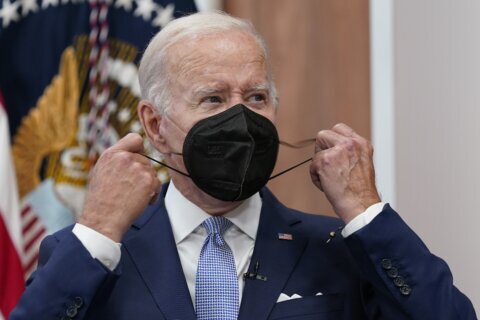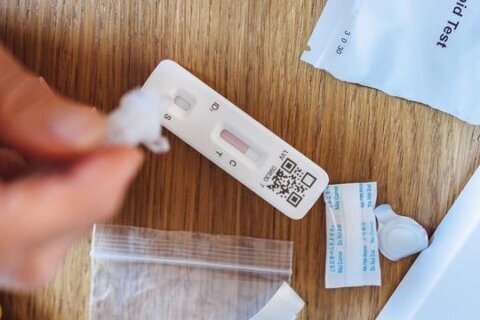A new spike in recently-reported cases of the coronavirus has prompted the District’s top health official to adjust one aspect of the city’s timeline for reopening.
One of the key bench marks in D.C.’s advancement to Phase 1 of its reopening plan is to show, based on a five-day average, a 14-day decline in the community spread of the virus that causes COVID-19.
On May 21, Mayor Muriel Bowser said the District had seen 11 days of falling numbers, which would have put city leadership in a place to announce the 14-day metric had been met over Memorial Day weekend.
However, on Sunday, Dr. LaQuandra Nesbitt, the head of the District’s Department of Health, said while the five-day running average continued to show a decline, a new recent spike had been detected, which reset the timeline as of May 24 back to Day 11.
The change means the soonest D.C. could reach the 14-day bench mark for reopening would be Wednesday, May 27.
Nesbitt, though, said the District is currently on track to meet its other Phase 1 bench marks.
Bowser plans to disclose Tuesday the earliest date she will make a determination about moving D.C. into Phase 1 of its reopening.
She previously said Phase 1 “is not an on and off switch. We will not be able to go back to life as we enjoyed it in February.”
Instead, it will include removing the stay-at-home order and allowing some basic nonessential activities to resume.
Nesbitt, in a teleconference with reporters Sunday, did her best to explain how the District defines “community spread.” One of the key elements, beyond just receiving reports of positive tests, which can come back from labs in a piecemeal fashion, is to review a patient’s history to find out when they first started feeling sick, or when that information is not available, to interview those who have tested positive and ask them when they first began feeling sick.
“In most cases, we’re establishing for the first time, the date of symptom onset for the individual,” Nesbitt said.
The symptom-onset date, Nesbitt said, is a more important way for public health officials to track how the virus is moving through the community than test results alone.
In this case, D.C. Health’s team determined that there was a spike in residents reporting onset of symptoms in the midst of an overall downward trend.
On the 12th day of decline, Nesbitt said, the District saw a low number of cases (68) based on symptom onset. So, with the District needing two more days of low numbers, on the day that would have been Day 13, that number hit 118, prompting the reset back to 11 days.
The difference between the two numbers, Nesbitt said, was too large to allow the timeline to advance to the 14th day and allow the District to cross one of its reopening requirements off the list.
“We will continue to monitor our progress,” she said.
Nesbitt discussed three other metrics that would allow the District to move to Phase 1 on May 29:
- A test positivity rate of under 20% – The latest measurement is 19%
- Contact tracers in place by June 1 – Nesbitt said that is on track
- Hospitals operating below 80% capacity – Hospitals are only 74% full
Here are the coronavirus numbers in D.C.:
Number of positive results: 8,110 (+144)
COVID-19-related deaths: 432 (+5)
Currently hospitalized*: 324 (-18)
Recoveries: 1,080 (+5)
Total number of tests: 51,991 (As of May 22. Data from May 23 is under review)
*D.C. began reporting hospitalizations May 11
- Sign up for WTOP alerts
- Latest coronavirus test results in DC, Maryland and Virginia
- How long can coronavirus infection last?
- Hogan: Md. sending 10,000 tests, other supplies to support local testing efforts
- How should I clean and store my face mask?
- Travel in the ‘new normal’: RVs, camping, one-tank trips will become popular, expert says
- Coronavirus resources: Get and give help in DC, Maryland and Virginia
Looking for more information? D.C., Maryland and Virginia are each releasing more data every day. Visit their official sites here: Virginia | Maryland | D.C.








